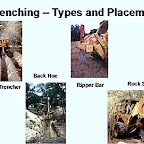I don’t know where it started, but there is a wives tale out there 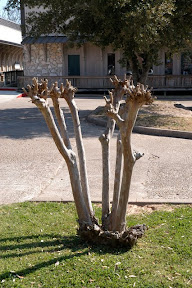 that you need to cut the tops off your crepe myrtle to get them to flower properly. This is absolutely not true! Crepe myrtles will produce abundant flowers and be healthier if you let them be.
that you need to cut the tops off your crepe myrtle to get them to flower properly. This is absolutely not true! Crepe myrtles will produce abundant flowers and be healthier if you let them be.
Tree Rings – Using Dendrochronology to Age Trees – Counting Rings
Counting rings is the tried and true method for determining the age of a tree. Dendrochronology is the science of counting tree rings to determine tree age and to identify extreme and unique environmental events. Scientists use certain trees, such as bristlecone 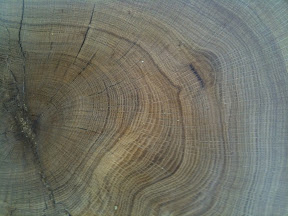 pine, that have slow growth rates and live for a very long time, to map out long sequences of weather patterns. These sequences are use to compare to known events, and to help develop base lines for carbon dating. In some regions dendrochronologists have more than 10,000 years sequenced. There are some problems with counting rings. Some of them surmountable and some not.
pine, that have slow growth rates and live for a very long time, to map out long sequences of weather patterns. These sequences are use to compare to known events, and to help develop base lines for carbon dating. In some regions dendrochronologists have more than 10,000 years sequenced. There are some problems with counting rings. Some of them surmountable and some not.
Continue reading Tree Rings – Using Dendrochronology to Age Trees – Counting Rings
Tree Fertilizer Products for the Do It Yourselfer
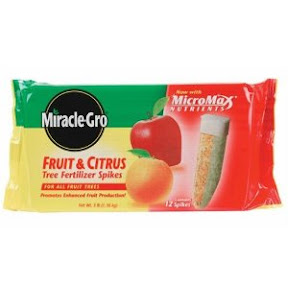
Fertilizing trees is a great way to keep trees healthy and is especially important for revitalizing sick trees. I highly recommend you read my four part series on tree fertilizers. You can access them by clicking on the fertilize link under categories on the right sidebar. This article is aimed at pointing you toward a few fertilizer products you can buy to do the job yourself. Some of the tips here will help you with the timing of the right application, but you do need to read the label of the product you are using to make sure you are applying it at the right rate.
Continue reading Tree Fertilizer Products for the Do It Yourselfer
Treaty Oak in Austin
The Treaty Oak is a southern live oak (Quercus virginiana) located in Treaty Oak Park on Baylor St. between 5th and 6th downtown. This historic tree is said to be over 500 years old. In 1927, our green piece of history was inducted into the American Forestry hall of fame. They said it to be the “most perfect specimen” of a tree in north America. The Treaty Oak is the last tree standing from a group of trees known as the Council Oaks. The grove was 14 trees strong at one time.
Continue reading Treaty Oak in Austin
How to Water a Newly Planted Tree
You absolutely must water your tree properly if you want any newly planted / transplanted tree to thrive. I highly recommend an automatic sprinkler system and/or tree bubbler. A tree’s planting site is going to determine the final watering regimen exactly, but here are some guidelines to help you get started.
Continue reading How to Water a Newly Planted Tree
All About Monterrey Oaks
Monterrey oaks (also known as Mexican white oak) started getting popular as a planting choice about 10 years ago. There are a few scattered specimens around town that are older than this, but not many. So far, this tree is proving to be a hardy tree to the area and it is oak wilt resistant. I expect to see more and more of the Monterrey oak as the years go by. But, for now, the jury is still out on this tree in my opinion. We’ll need to see a number of these trees live into maturity before I give them a full-blown thumbs up. I’ve run across a few mature specimens and they all seem to be very free of problems. I’ve began recommending this tree regularly.
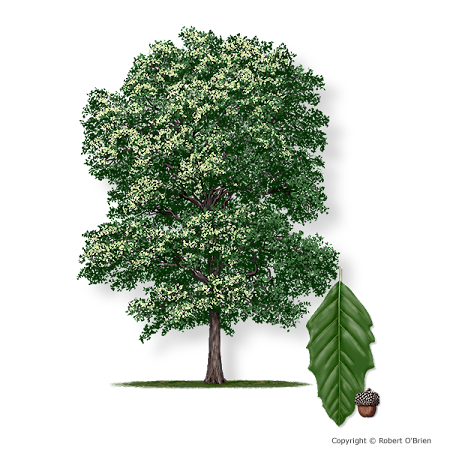
Check List for a Tree Health Check-Up
Reading a few articles online isn’t going to make you an arborist. But, if you insist on making your own diagnosis here is a good check list of things to look for. My preferred use of this info would be used as your tool for interviewing professionals. Here is a form you can print up. Here we go:
Continue reading Check List for a Tree Health Check-Up
Treatment and Control Options for Oak Wilt
Oak wilt is a devastating tree disease and very expensive to combat. There has not been any real improvement in the treatment and control options since the first product was released on the market back in the mid 90’s. For chemical treatment you have two injection techniques for administering the fungicide and for large scale control measures, trenching is the best option. The Texas Forest Service (TFS) publishes a brochure for managing oak wilt.
The History of Oak Wilt
This article is mostly a summary of a report published by Jennifer Juzwik, Thomas C. Harrington, William L MacDonald and David N Appel titled “The Origin of Ceratocystis fagacearum, the Oak Wilt Fungus.”  David Appel is the head of Department of Plant Pathology and Microbiology, Texas A&M University, College Station. He is considered by many as the go-to for oak wilt in the state of Texas. And, there is strong argument that central Texas is the oak wilt capital of the world. The epidemic is at it’s worst here in our own back yard. You can see the document in its entirety here. Let’s get started…
David Appel is the head of Department of Plant Pathology and Microbiology, Texas A&M University, College Station. He is considered by many as the go-to for oak wilt in the state of Texas. And, there is strong argument that central Texas is the oak wilt capital of the world. The epidemic is at it’s worst here in our own back yard. You can see the document in its entirety here. Let’s get started…
Continue reading The History of Oak Wilt
